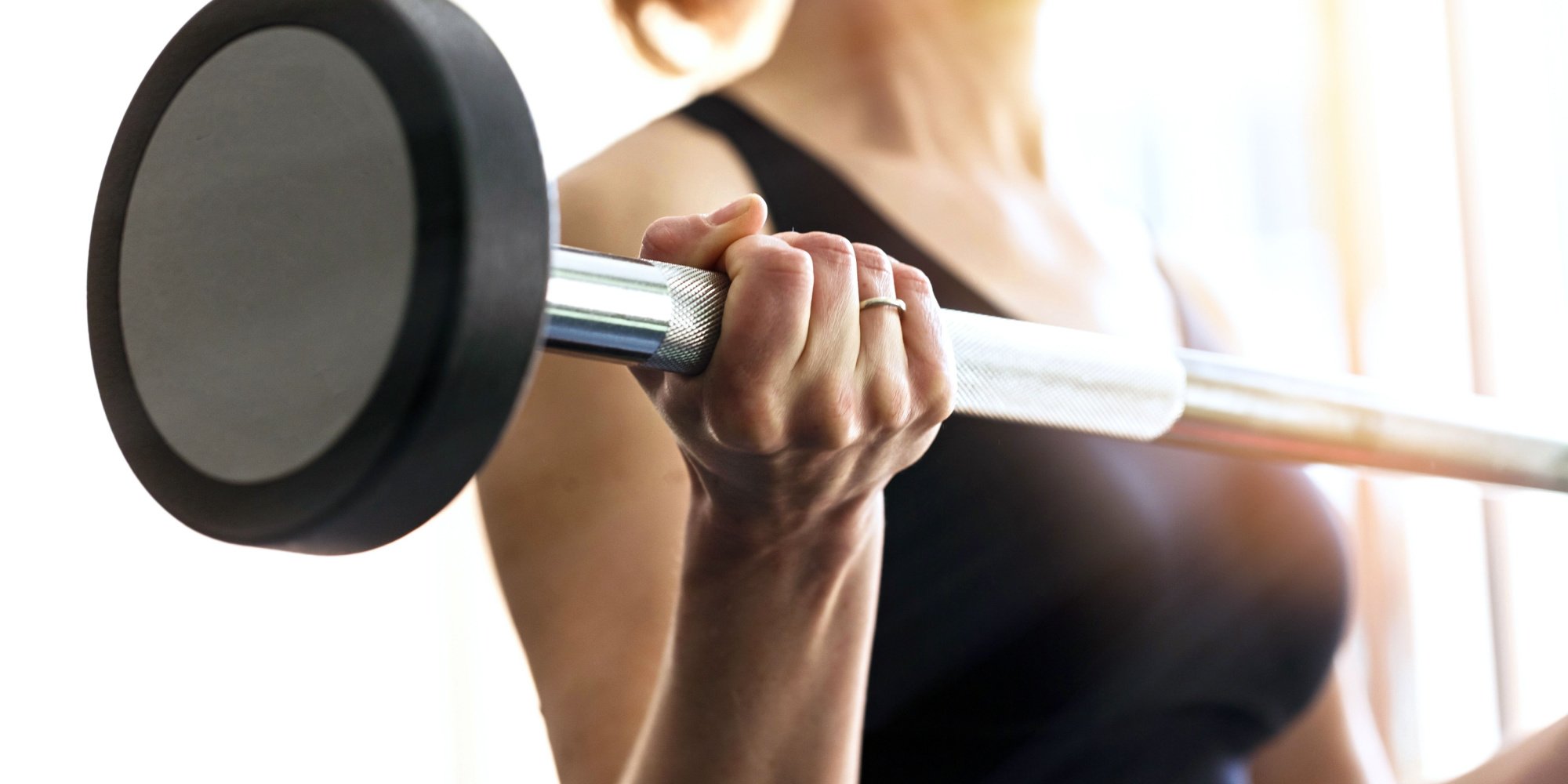Strength Training 101 for Beginners
Dec 23, 2022 mindpumpStrength training doesn’t have to be complicated. A lot of people (like me) tend to overthink the process, scrolling through countless Instagram accounts for fancy workouts, strength training tips, and the latest workout that beats out the latest trend.
If you are about to start resistance training for the first time, congrats! You are implementing one of the best things you can do for your overall health, including combating heart disease, obesity, high cholesterol, and hypertension, among others. To help you get started on the right foot, continue reading so that you are well-equipped with strength training basics.
Start with a 5 to 10 Minute Warm-up
There is never a good time to go straight into a workout without a proper warm-up. Starting a resistance training workout cold is a recipe for disaster. If you want to avoid the risk of injury and get the most out of your lifts, make sure you are engaging in dynamic movements and stretches that utilize the muscle groups you plan on using. On chest day, running on the treadmill is probably not your best option. It’ll probably get your heart rate up, but you need to actively engage the pecs, shoulders, triceps, and core before a chest-focused weightlifting workout, so they can efficiently activate during the heavier lifts.
Follow a Guided Workout
You should always go into your workout with a plan. As a novice, you should be focused on total body workouts. This can look something like 2 chest-focused exercises, 2 back-focused exercises, two lower body exercises, and 2 core and balance exercises. I mention balance because this is often neglected by even the most enthusiastic of fitness junkies. Balance training enhances neuromuscular control, which helps generate faster muscle firing.
Also make sure to keep track of the number of sets, reps, and the resistance you are using for each exercise. It’s not uncommon to step into a gym and forget what resistance was used the week before. MAPS Starter is a program that makes it super easy to increase strength as you follow workouts over a 9-week period.
Here are a couple of additional tips to consider during your workout:
- Choose the right amount of resistance for each exercise. If you are reading this, you are probably a beginner, so I wouldn’t recommend going TOO heavy for the first few months. You can go heavier with larger muscle groups like the quadriceps, hamstrings, lats, and pecs. For biceps, deltoids, triceps, and calves, you’ll need to go lighter. If you are aiming for 10 reps per set, and you can barely get through 8, you should probably drop the resistance.
- Focus on form. This tip is pretty simple, but it’s important. Improper form could mean you are emphasizing the wrong muscles, or you’re at a greater chance of injuring yourself. Mind Pump TV has an excellent video library on how to perform exercises with optimal form.
- Gradually progress intensity. Consider staying in your current routine for 4 to 6 weeks before intensifying your workouts. These initial stages are vital to ensure proper execution of more advanced lifts. As with building a home, a solid foundation is key and should not be neglected. If you feel like you need to add an extra week to your current routine so that you are more comfortable with the movements, that’s fine! You can increase intensity by adding more reps, an additional set, or more resistance.
Refuel
You’ll want to consume a healthy protein+carb meal 30 minutes to 2 hours after the end of your workout. But honestly, the sooner, the better. Referred to as the anabolic window, this post-exercise period represents an opportunity to enhance adaptation and recovery. Studies have shown that the intake of adequate protein AND carbohydrates give you the best bang for your buck; the protein helps with recovery and muscle synthesis, while carbohydrates help restore muscle glycogen, which provides energy. Depending on workout intensity, your carbohydrate intake will vary, but most people should fall in the range of 20 to 60 grams of carbohydrates. Athletes, or those working out at a higher intensity or duration, will need more. As for protein, 15 to 25 grams of protein should suffice. There is evidence that shows consuming up to 40 grams post-workout shows no difference in muscle synthesis rates. Throughout the day, you’ll want to consume about 1.2 grams of protein per kilogram of body weight, evenly distributed throughout all of your meals. Eating one, protein-heavy meal isn’t as effective.
Sleep and Recover
Get some sleep. You’ll need it! You may be a little sore for the first couple of weeks, but you shouldn’t be so sore that it impedes on your daily activities. Aim for at least 7 hours of sleep per night to allow for ample muscle recovery. On your off days, we encourage stretching, mobility exercises, walks, hiking, and other activities that are low-intensity but also enjoyable to you. If daily walks aren’t your thing, but you enjoy a leisurely morning cycle session while reading your Kindle (that would be me), then go for it. The important thing to remember is that these shouldn’t be considered workouts, but more of active rest. If you can carry on a conversation without any effort, then you are probably at a low enough intensity.







